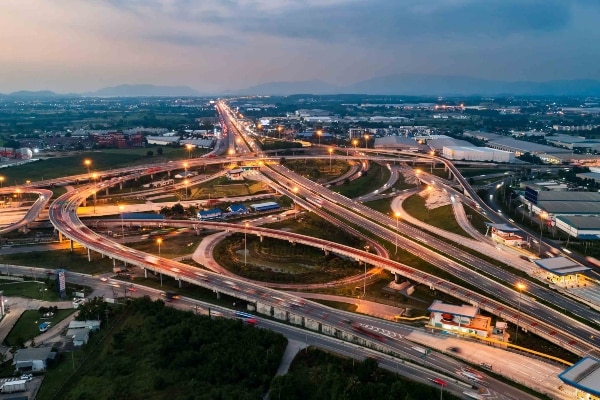-
Featured services
2026 Global AI Report: A Playbook for AI Leaders
Why AI strategy is your business strategy: The acceleration toward an AI-native state. Explore executive insights from AI leaders.
Access the playbook -
Services
Alle Services und Produkte anzeigenNutzen Sie unsere Fähigkeiten, um die Transformation Ihres Unternehmens zu beschleunigen.
-
Services
Network-Services
Beliebte Produkte
-
Services
Cloud
Beliebte Produkte
-
Services
Consulting
-
Edge as a Service
-
Services
Data und Artificial Intelligence
- KI und intelligente Lösungen
- Daten-/KI-Strategie und -Programm
- Data Engineering und Plattformen
- Daten-Governance und -management
- Datenvisualisierung und Entscheidungsfindung
- $name
- GenAI Platforms
- GenAI Industry Services
- GenAI Infrastructure Services
- GenAI Value Transformation
- Data und Artificial Intelligence
-
-
Services
Global Data Centers
-
Beliebte Produkte
-
Services
Application Services
-
Services
Sustainability Services
-
Services
Digital Workplace
-
Services
Business Process Services
-
Services
Generative AI
-
Services
Cybersecurity
-
Services
Enterprise Application Platforms
![]()
IDC MarketScape: Anbieterbewertung für Rechenzentrumsservices weltweit 2023
Wir glauben, dass Marktführer zu sein eine weitere Bestätigung unseres umfassenden Angebotes im Bereich Rechenzentren ist.
Holen Sie sich den IDC MarketScape -
-
Erkenntnisse
Einblicke und RessourcenErfahren Sie, wie die Technologie Unternehmen, die Industrie und die Gesellschaft prägt.
-
Erkenntnisse
Ausgewählte Einblicke
-
Die Zukunft des Networking
-
Using the cloud to cut costs needs the right approach
When organizations focus on transformation, a move to the cloud can deliver cost savings – but they often need expert advice to help them along their journey
-
So funktioniert Zero-Trust-Sicherheit für Ihr Unternehmen
Sorgen Sie dafür, dass Zero-Trust-Sicherheit für Ihr Unternehmen in hybriden Arbeitsumgebungen funktioniert.
-
-
Erkenntnisse
![]()
Copilot für Microsoft 365
Jeder kann mit einem leistungsstarken KI-Tool für die tägliche Arbeit intelligenter arbeiten.
Copilot noch heute entdecken -
-
Lösungen
Alle LösungenWir helfen Ihnen dabei, den Anforderungen an kontinuierliche Innovation und Transformation gerecht zu werden
Global Employee Experience Trends Report
Excel in EX mit Forschung basierend auf Interviews mit über 1.400 Entscheidungsträger:innen auf der ganzen Welt.
Besorgen Sie sich den EX-Report -
Erfahren Sie, wie wir Ihre Geschäftstransformation beschleunigen können
-
Über uns
Neueste Kundenberichte
-
Liantis
Im Laufe der Zeit hatte Liantis, ein etabliertes HR-Unternehmen in Belgien, Dateninseln und isolierte Lösungen als Teil seines Legacysystems aufgebaut.
-
Randstad
We ensured that Randstad’s migration to Genesys Cloud CX had no impact on availability, ensuring an exceptional user experience for clients and talent.
-
-
![Heineken Landing Page]()
NTT DATA und HEINEKEN
HEINEKEN revolutioniert die Mitarbeitererfahrung und die Zusammenarbeit mit einem hybriden Arbeitsplatzmodell.
Lesen Sie die Geschichte von HEINEKEN -
- Karriere
Topics in this article
Closing the data risk gap in the era of remote working
We live in a world where large amounts of data are sent to the cloud and backed up by massive servers. We trust that data will be protected and that our information is secure. As cyberattacks increase, more of us are questioning how organizations keep their information and systems safe. But unfortunately, no one has absolute control of the infiltrators destined to compromise a network; we can only try our best to prevent it. When you update your computer with the latest software or antivirus update, you trust that the download is legitimate and safe. This is where things can go inherently wrong.Downloading corrupt files, misleading or fake websites, suspicious web pages, pop-ups, and sluggish computer performance may not seem obvious to the daily user, but what is happening behind the scenes is more malicious than one might suspect. An example of this was the recent SolarWinds hack, an attack so stealth and sophisticated that it's now the baseline for threat detection prevention processes.
Automated monitoring enables organizations to respond to cyber threats and resolve them quickly
Combating security attacks.
Organizations need to be able to say that their download can be trusted. Ensuring testing and guidelines are met is necessary for validating and executing a safe product and being protected from future threats.
Automated monitoring is one way organizations can quickly respond and deploy detection and action, keep systems and software secure and leave less room for error.
Another key component is promoting complete visibility. In the past, organizations didn’t like talking about their software validation processes but they-re now beginning to expose their test criteria and security architecture to gain trust.
Education of the workforce is also crucial, so that they know what red flags to look for and awareness of different risks. The first defense plan is to teach users how to detect threats and take steps to alert their IT support or provider of any suspicious activity.
The future of attack prevention
As remote work becomes the norm and cloud storage is more widely depended upon, providing secure environments is imperative. Those that can react and create a more agile development will widen the gap with their competitors. There will be quick turnaround times for updates and products, but not at the expense of producing secure and reliable offerings.
To listen to our podcast with Palo Alto, please click here.
To find out more about our security managed services, please click here.




